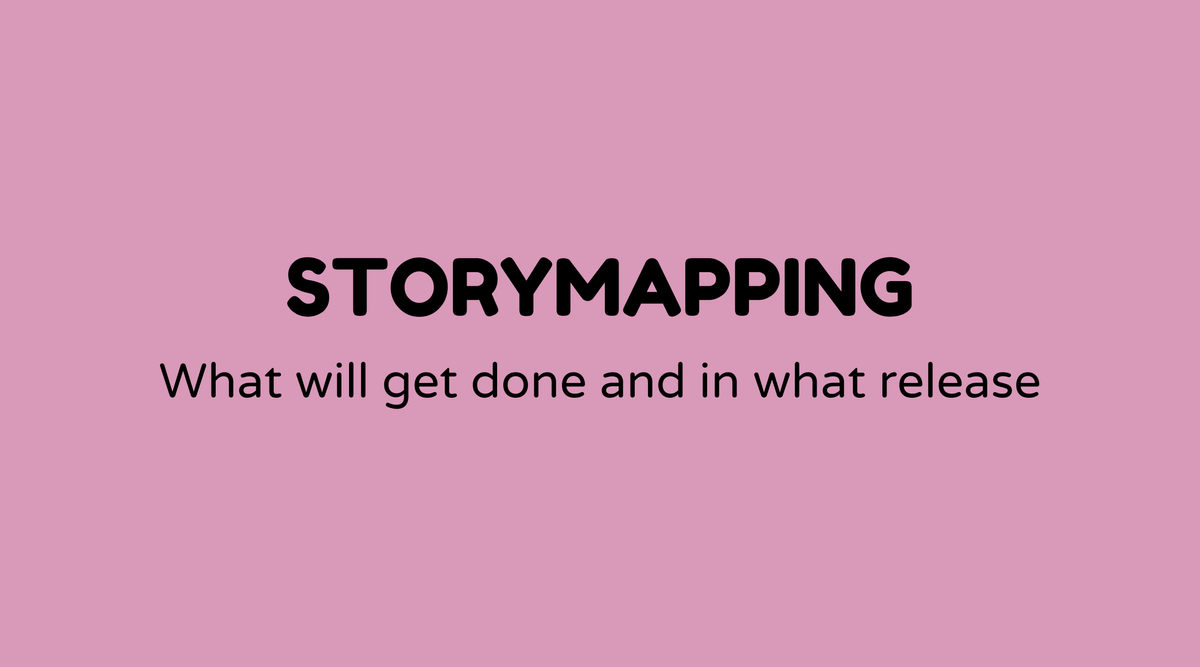Story Mapping

Overview of Story Mapping:
Story Mapping is a useful technique in product management that aids teams in visualizing the customer journey and effectively prioritizing tasks. It resembles crafting a roadmap where every twist and turn symbolizes a feature or function relevant to the user's experience. This visual framework allows teams to better grasp the scope of a project and maintain focus throughout the development process.
In recent years, the idea of story mapping has gained popularity, especially among agile teams. It serves as an engaging method to unite everyone under a shared understanding of what needs to be accomplished. Additionally, conducting story mapping workshops guarantees that every voice—developer, designer, or stakeholder—is acknowledged and valued.
Grab your post-it notes and markers—story mapping is here to bring clarity to the complexities of product development!
Why Story Mapping Matters:
Story mapping is not merely a tool; it provides substantial benefits. Here's why:
- Improves Collaboration: Teams, from developers to stakeholders, can work together more effectively as everyone shares a common understanding.
- Prioritizes User Experience: Helps rank tasks according to the customer journey, ensuring that the most essential features are delivered first.
- Streamlines Workflow: By offering a clear visual representation of the project, it eliminates unnecessary steps and pinpoints potential challenges.
- Aligns Goals: Establishes a clear direction that aligns tasks with business objectives and customer needs.
Discover more about how agile methodologies like Scrum revolve around tools like story mapping here.
What is Story Mapping:
In simple terms, story mapping is akin to writing a book where your chapters consist of user interactions with your product. It deconstructs the customer journey into smaller, manageable portions known as "stories." These stories are then arranged in sequence—beginning with the moment users engage with the product and culminating in the achievement of their ultimate goal.
Components of a Story Map:
- Activities: Broad tasks representing customer interactions.
- Steps: Smaller tasks within each activity.
- Stories: Detailed tasks linked to individual steps.
Consider it as a large whiteboard exercise where all activities and steps are outlined in detail. This setup allows you to visually pinpoint gaps, overlaps, and prioritize tasks.
How to Create a Story Map:
Creating a story map is less complicated than it may seem. Here’s a simple guide:
- Identify the Goal: What are the broad objectives of your product?
- Understand the Persona: Know who your user is and what they require.
- List out Activities: Lay out all the broad tasks or interactions a user has with your product.
- Break Down into Stories: Each activity should be deconstructed into smaller stories or steps.
- Prioritize: Determine the critical path and arrange tasks based on user impact.
Sample Agenda of Story Mapping Workshop:
A well-structured story mapping workshop can yield valuable insights. Here’s a sample agenda:
| Time | Activity | Description |
|---|---|---|
| 09:00 - 09:30 | Introduction and Goals | Define what the session aims to accomplish |
| 09:30 - 10:30 | Persona Creation | Deep dive into understanding the target user |
| 10:30 - 11:30 | Mapping Activities | Identify key activities from a user perspective |
| 11:30 - 12:00 | Break | Refresh and regroup |
| 12:00 - 13:00 | Breaking Down Activities into Stories | Segment activities into manageable steps |
| 13:00 - 14:00 | Lunch Break | Enjoy a relaxing lunch |
| 14:00 - 15:30 | Prioritization and Alignment | Arrange in order of importance and feasibility |
| 15:30 - 16:00 | Review and Feedback | Discuss the roadmap and next steps |
Examples of Story Mapping:
To provide context, let's explore some practical illustrations:
- E-Commerce Store: Mapping the journey from landing on the homepage, searching for products, selecting items, to the checkout process.
- Mobile App Development: Charting user interactions from downloading, setting up, to in-app purchases.
- Healthcare Application: Visualizing the patient journey from registration, scheduling appointments, to receiving care.
FAQs:
How does story mapping differ from a user journey map?
- While both visualize user interactions, story mapping concentrates on features to develop, while journey mapping emphasizes emotions and experiences.
Is story mapping only for software products?
- No, it can be applied to any project where visualizing user interactions and outcomes is needed.
Who should be involved in a story mapping session?
- Involve a diverse team—including developers, product managers, designers, and stakeholders—for a comprehensive view.
Can story mapping be used for ongoing products?
- Yes, it's excellent for continuous improvement by identifying which features require enhancement.
Do we need specialized tools for story mapping?
- Sticky notes and a whiteboard suffice, but software like Miro can assist as well.
What's the biggest challenge in story mapping?
- Aligning varied perspectives and prioritizing can be complex but is rewarding when done right.



